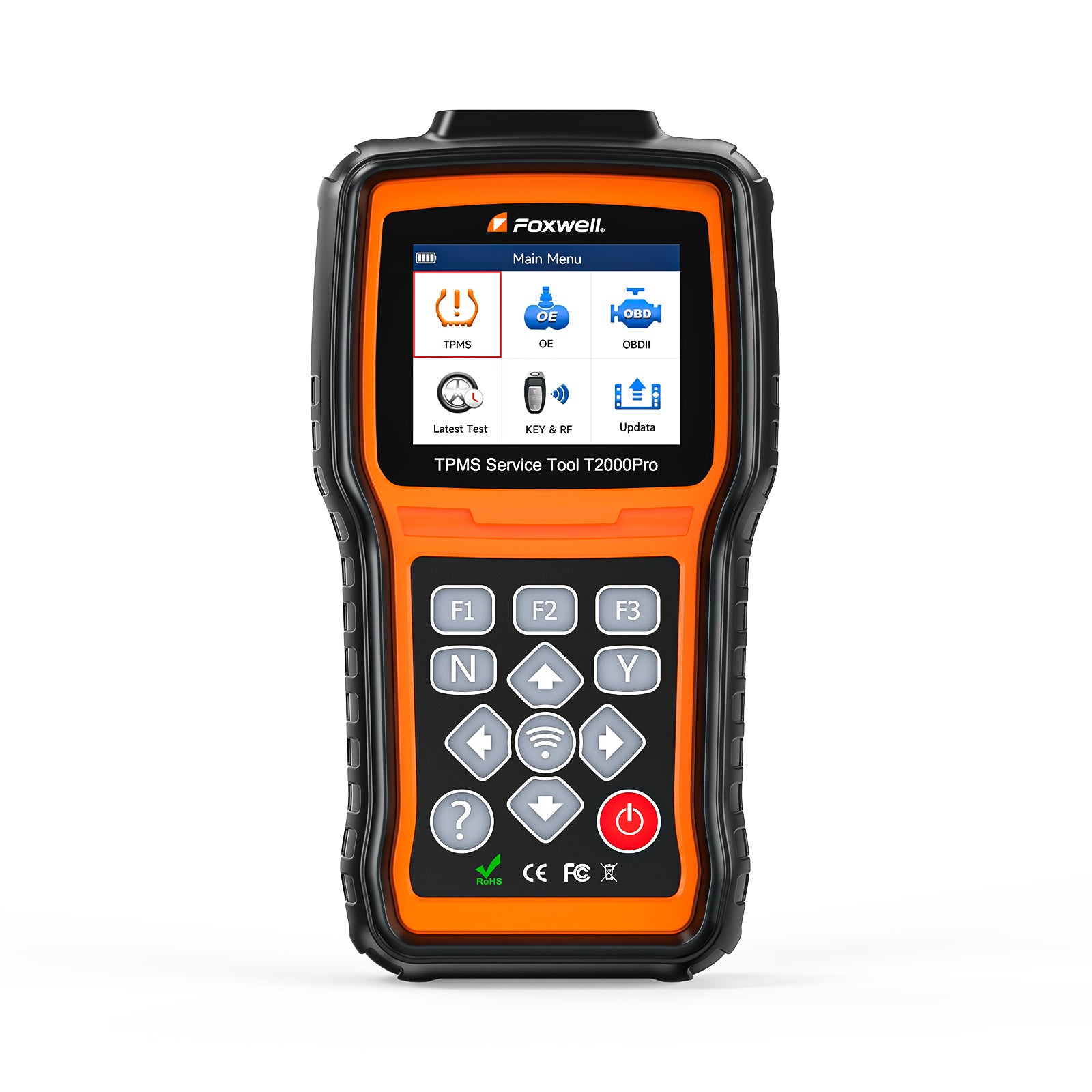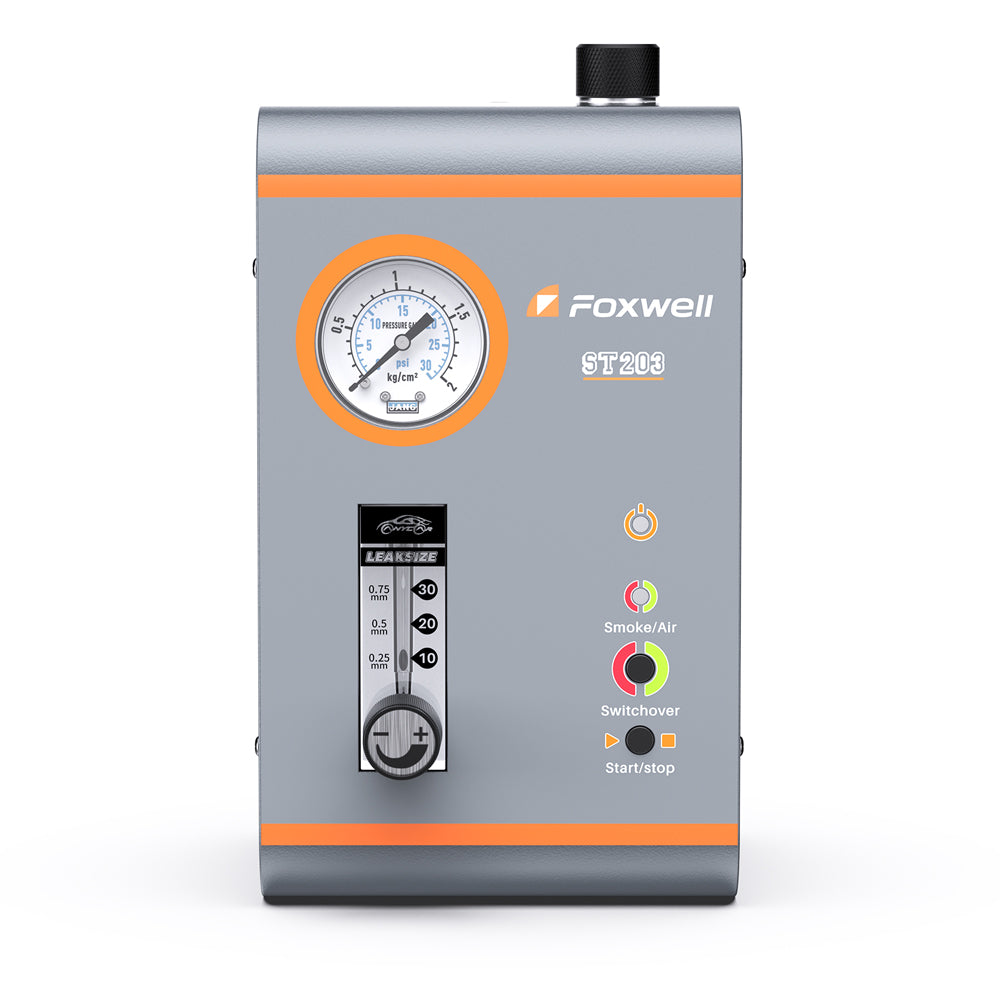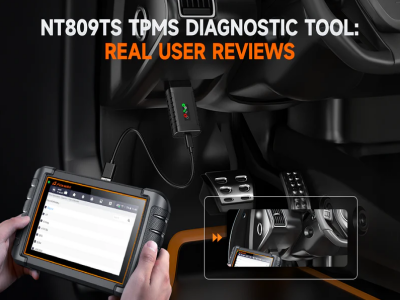"The car seems to drive just fine, but the P2099 warning light won’t go away."This is a common complaint on car forums. For such "asymptomatic faults," replacing parts blindly not only wastes time and money but also fails to address the root cause.
Combining real owner repair cases with professional diagnostic procedures, this article systematically outlines the triggering factors, efficient troubleshooting paths, and precise repair solutions for P2099 faults—helping you quickly locate the issue and avoid unnecessary maintenance costs.
What Does the P2099 Code Mean?
This code indicates that the fuel mixture after the catalytic converter on Bank 2 is too rich—meaning there's too much fuel or too little oxygen in the exhaust gases.
The code P2099 is triggered when the engine control module (ECM) detects that Bank 2’s post-catalyst exhaust remains consistently rich, even after combustion and emissions filtering. This often points to inefficiencies in the fuel or emissions systems.
- Post-catalyst fuel trim: The ECM adjusts the air-fuel ratio based on data from the downstream oxygen sensor after the catalytic converter, monitoring emissions within optimal limits.
- Too rich: Means the air-fuel mixture contains too much fuel and not enough oxygen. This can impact engine efficiency, trigger fault codes, and damage emissions components over time.
- Bank 2: The engine bank opposite cylinder 1, typically found in V6/V8 engines.
In short, the ECM has detected that even after catalytic conversion, Bank 2’s exhaust remains overly rich, which may suggest problems with O2 sensors, fuel injectors, exhaust leaks, or even the catalytic converter itself.
What Are the Symptoms of Code P2099?
When your vehicle triggers the P2099 code (Post Catalyst Fuel Trim System Too Rich – Bank 2), it typically presents with the following key symptoms, ranging from visible warnings to performance issues:
1. Check Engine Light (CEL) Activation
The most immediate sign is the illumination of the Malfunction Indicator Lamp (MIL), alerting you to a potential engine or emissions system fault.
2. Reduced Fuel Efficiency
An overly rich air-fuel mixture (excess fuel, insufficient oxygen) causes inefficient combustion, leading to noticeably higher fuel consumption and more frequent refueling.
3. Exhaust-Related Signs
- Strong Gasoline Odor: Unburned fuel in the exhaust produces a distinct gasoline smell.
- Dark Exhaust Smoke: Black soot or smoke may emerge from the tailpipe, especially during acceleration.
4. Engine Performance Complications
- Sluggish Acceleration: The engine may feel unresponsive during overtaking or uphill driving.
- Rough Idling or Stalling: Erratic idling or stalling can occur, particularly at low speeds or when starting the vehicle.
- Loss of Power: Inconsistent performance may make it difficult to maintain speed under heavy loads.
5. Emissions and Component Damage
- Failed Emissions Tests: Excess hydrocarbons (HC) and carbon monoxide (CO) often cause vehicles to fail emissions checks.
- Catalytic Converter Risks: Prolonged rich fuel trim can overheat the catalytic converter, leading to clogging, degradation, or rattling noises from the exhaust.
Related Reading: P00F4 Code: Symptoms, Causes & Diagnostics | Foxwell
How to Diagnose P2099 Engine Code? (Diagnostic Procedure)
1. Basic Inspection: Exhaust Leak Detection
Application Scenario: Rule out simple hardware faults at the initial diagnosis stage to avoid misjudging sensor or fuel system issues.
Essential Tools: Soapy water + spray bottle, flashlight, exhaust backpressure tester (recommended)
Step 1: Test for Exhaust System Leaks
- Spray soapy water on components downstream of the catalytic converter (flanges/pipes/catalytic converter) while the engine is idling; bubbles indicate leaks
- Key Areas: Exhaust manifold gaskets, flexible exhaust pipes.
Step 2: Catalytic Converter Inspection
- Visual Diagnosis: Check for blue/red overheating marks on the housing and smell for sulfur in the exhaust (sign of clogging)
- Backpressure Test: Connect a backpressure tester to the O2 sensor port; pressure >1.5 psi at 2,000 RPM indicates a clogged catalytic converter
2. Sensor Diagnostics: Oxygen Sensors & Air Flow Meters
Application Scenario: Investigate signal acquisition components for false readings when the exhaust system is free of anomalies.
Tools: OBD2 scan tool, digital multimeter
Step 1: Read Real-Time Data with Scanner
Use an OBD2 scanner like the Foxwell NT710, which offers real-time graphing and precise data visualization. This makes it easier to spot abnormal sensor readings without guesswork. It can display O2 sensor voltages, fuel trim values, and MAF airflow—all in one interface.
Key Indicators:
-
- Downstream O2 sensor voltage (Bank 2): Normal 0.1-0.9V fluctuation; consistent >0.8V indicates sensor failure.
- Short-Term Fuel Trim (STFT): Positive value >+20% indicates rich fuel mixture
- MAF sensor airflow: Compare with vehicle manual (e.g., 2.5-4 g/s for a 2.0L engine)
Step 2: Test Downstream O2 Sensor with Multimeter
- Disconnect the sensor plug and warm up the engine to normal operating temperature
- Measure voltage on the signal wire, which should fluctuate with throttle input; replace the sensor if the value is constant
- Cost-Saving Tip: DIY user CarFixer2000 avoided a $150 sensor misreplacement by testing first
3. Component Function Testing: Fuel System & Injectors
Application Scenario: Deep-dive into actuator components when sensor data is normal but the fault code persists.
Essential Tools: Fuel pressure gauge (with Schrader valve adapter), injector balance tester, vehicle smoke machine
Step 1: Fuel Pressure Test
- Connect the pressure gauge to the fuel rail Schrader valve and turn the key to "ON" (without starting)
- Standard pressure: 40-60 psi for gasoline engines, 5-10 psi for port injection
- If pressure drops >2 psi within 10 seconds, suspect a leaking fuel regulator or injectors
Step 2: Injector Balance Test
-
DIY Method:
- Record initial fuel pressure and start the engine at idle
- Disconnect injector plugs one by one; normal pressure drop should be 5-8 psi per injector
- Injectors with no significant pressure drop are faulty
- Advanced Tool: Smoke machine for intake manifold vacuum leak detection (smoke escape points indicate leaks)
Real Case Study – Diagnosing P2099 on a 2018 Chevy Silverado
One forum user from chevroletforum shared a troubleshooting experience with a 2018 Chevy Silverado that repeatedly triggered the P2099 code despite no obvious performance issues. The key steps included:
MAF Sensor Cleaning Method:
- Soaked the MAF sensor in isopropyl alcohol overnight
- Dried it using a hairdryer on low heat setting
- Reread data stream after reinstallation—abnormal airflow readings returned to normal
If MAF sensor data is abnormal, cleaning is often an effective first - step approach. Use specialized MAF cleaner, electrical contact cleaner, or isopropyl alcohol (avoid carburetor cleaner). Ensure complete drying before reinstallation to prevent moisture - related malfunctions.
How To Fix P2099: Post Catalyst Fuel Trim System Too Rich (Bank 2)
| Issue Category | Root Cause | Repair Action | Parts & Tools Needed | Forum Tip |
|---|---|---|---|---|
| Exhaust System Leaks | Cracked pipes, faulty gaskets, flex pipe damage | - Weld minor cracks; replace damaged components (flanges, flex pipes) | Exhaust welding kit, OEM gaskets, torque wrench | "Always torque exhaust bolts to OEM spec—over-tightening causes new leaks." |
| Downstream O2 Sensor | Contaminated or failed sensor (Bank 2) | - Replace with OEM or Bosch/Denso sensor | O2 sensor socket, torque wrench (30–40 ft-lb) | "Aftermarket sensors cause 40% of repeat codes—check OEM part number first." |
| Fuel Injectors (Bank 2) | Leaking/stuck injectors, clogged nozzles | - Clean with professional machine; replace with OEM injectors if necessary | Injector puller kit, fuel system cleaner | "For V8s, replace all Bank 2 injectors to maintain balance." |
| Fuel Pressure Issues | Faulty regulator, stuck fuel pump relay | - Replace regulator; test/swap fuel pump relay | Fuel pressure gauge, multimeter | "Relay testing saves $100+ vs replacing without diagnosis." |
| Intake Vacuum Leaks | Cracked hoses, faulty PCV valve, intake manifold gasket damage | - Replace hoses/gaskets; repair vacuum leaks with smoke machine findings | Smoke machine, OEM intake gaskets | "Use OEM intake gaskets—aftermarket ones fail within 1 year in 60% of cases." |
| Catalytic Converter | Clogged/overheated due to prolonged rich condition | - Replace with OEM or CARB-certified converter | Catalytic converter lift kit, O2 sensor socket | "Replace upstream/downstream O2 sensors when changing the cat to avoid false codes." |
| MAF Sensor | Contamination from oiled air filters or debris | - Clean with CRC MAF cleaner/isopropyl alcohol; replace if readings remain abnormal | MAF sensor cleaner, electrical contact cleaner | "K&N filter users: clean MAF every 30,000 miles to prevent code recurrence." |
Related Reading: OBD - II Trouble Code P0141: O2 Sensor Heater Circuit Bank 1 Sensor 2 - Causes, Symptoms & Diagnosis
How much does it cost to fix a P2099 code?
| Grade | Cost Range | Repair Scope |
|---|---|---|
| Low-Cost Quick Fix | $50–$200 | - MAF Sensor Cleaning: Use specialized cleaner or isopropyl alcohol to remove oil/carbon deposits, ideal for K&N air filter users. - Minor Exhaust Leak Repair: Weld small cracks or use sealant tape for slight leaks. |
| Medium-Cost Parts Replacement | $200–$800 | - Downstream O2 Sensor Replacement: OEM sensor $200–$500 (e.g., Buick 4S shop replacement with labor ~$600). - Fuel Pressure Relay/PCV Valve Replacement: Relay $100–$300, PCV valve $100–$300 + $100–$200 labor. - Intake Hose/Injector Cleaning: Replace cracked hose $50–$200; bottle cleaning for injectors ~$480. |
| High-Cost System Overhaul | $800–$2,000+ | - Catalytic Converter Replacement: Aftermarket $800–$1,200 (CARB-certified models cost more); OEM from 4S shop ~$1,500 + $500 labor. - Bank 2 Injector Assembly Replacement: Full replacement for V8 engine OEM injectors $1,000–$2,000 + $500 labor. - Exhaust System Overhaul: Replace flanges, flex pipes $500–$1,000 + $200–$500 labor. |
-
Vehicle Model Difference
Parts prices for luxury brands (e.g., Mercedes-Benz) are 2-3 times higher than those for economy models (e.g., Chevrolet). -
Repair Channel Disparity
Labor costs at 4S shops are 50%-100% higher than those at independent repair facilities. -
Parts Type Variation
OEM parts are 30%-80% costlier than aftermarket alternatives.
How to Fix Post-Catalyst Fuel Trim System Too Lean
Applicable Trouble Codes: P2097/P0174/P0171
1. P2097/P0174/P0171 VS. P2099 Repairs
| P2099 (Rich) | P2097/P0171/P0174 (Lean) |
|---|---|
| Excess fuel or insufficient air | Excess air or insufficient fuel |
| Focus on fuel pressure/injectors | Focus on air leaks/fuel delivery issues |
| Downstream O2 sensor stuck high | Downstream O2 sensor stuck low (<0.4V) |
2. Special Troubleshooting Steps (vs. P2099)
Intake Air Leak Detection (P2099 checks exhaust leaks):
- Use a smoke machine to inspect intake hoses, PCV valves, and intake manifold gaskets
- DIY Tip: Spray carb cleaner around suspected leaks—rising RPMs confirm a leak
Reverse Fuel System Check (P2099 checks high pressure; lean codes check low pressure):
- Test fuel pump pressure with a gauge (below 40 psi signals clogged filter or weak pump)
- Inspect injectors for clogs (P2099 checks for leaks)
Downstream O2 Sensor Status (Replace when P2099 voltage >0.8V; replace when lean voltage <0.3V):
- Multimeter test: Replace sensor if voltage stays below 0.3V at idle
EVAP System Inspection (Rarely needed for P2099):
- Check purge valve and canister hoses for cracks—stuck-open valves draw extra air
3. Low-Cost First Steps (vs. P2099)
- Clean MAF sensor (for low airflow readings; P2099 targets high readings)
- Temporarily block suspect vacuum hoses (e.g., brake booster) to locate leaks
4. Skip These Steps (vs. P2099)
- Exhaust backpressure testing (P2099’s cat check is less relevant for lean codes)
- Injector balance tests—address intake leaks first for lean issues
Fixing lean codes reverses P2099’s diagnostic logic—shift from "controlling fuel" to "managing intake air", prioritizing unmetered air intrusion and insufficient fuel supply over P2099’s focus on excessive fuel.
Is it safe to drive with a P2099 code?
It is not recommended to continue long-distance driving. Although the p2099 engine code does not cause the vehicle to break down immediately, it poses a risk. If a vehicle only shows a fault code without any obvious abnormalities, it can be driven at a low speed for a short period of time (such as on the way to a repair point). At this time, the engine can still maintain basic operation, but an overly rich mixture will cause a sharp increase in fuel consumption and an increase in carbon deposits on the spark plugs. In the long term, it may affect the ignition system and indirectly reduce driving safety. If the vehicle shows obvious abnormalities, such as severe engine shaking or stalling, or if the fault light keeps flashing, it is recommended to stop the vehicle immediately for inspection. An overly rich mixture may cause incomplete combustion, leading to overheating of the exhaust pipe and even a fire risk, while seriously affecting the vehicle's handling stability.
Can a faulty catalytic converter cause a P2099 code?
Yes, a catalytic converter failure can indeed trigger the P2099 fault code. When the performance of the catalytic converter declines or problems such as blockage and contamination occur, it will cause the downstream oxygen sensor to detect abnormal exhaust components, thereby causing the engine control module (ECM) to misjudge that the exhaust is too thick and trigger P2099.
However, it should be noted that P2099 is not always caused by a catalytic converter. Compared with catalytic converter malfunctions, the P2099 has fuel system issues (injector leakage, excessive fuel pressure, poor fuel quality) and intake system problems (air filter blockage, throttle position sensor failure, intake manifold leakage). It is more closely related to the failure of the oxygen sensor itself and engine combustion problems (such as spark plug failure, ignition coil failure, insufficient cylinder pressure, etc.). Therefore, if you have ruled out these common fault sources but the code still exists, then the aging of the catalytic converter itself or insufficient conversion efficiency is the key object that must be checked.
How to Fix P2099 After Changing Catalytic Converter?
Still getting the P2099 code after replacing the catalytic converter? Here’s how to fix it step by step:
1. Clear the Code and Perform a Drive Cycle
After installing a new catalytic converter, use an OBD2 scan tool (e.g., Foxwell NT710) to clear all stored codes. Then, perform a full cold start to warm-up drive cycle to let the ECM relearn and reassess.
Note: If you skip code clearing, the ECM might keep using old fuel trim data, triggering a false P2099.
2. Check the Downstream Oxygen Sensor (B2S2)
If P2099 persists, the downstream O2 sensor might be aged or sending incorrect signals, making the ECM misjudge exhaust richness:
- Use a scan tool to check O2 sensor waveform stability.
- If the voltage signal is too active (similar to the upstream sensor), it likely needs replacement.
3. Confirm Catalytic Converter Quality and Fitment
Using a low-quality or incompatible aftermarket catalytic converter may not sufficiently clean exhaust gases, still causing P2099:
- Ensure the converter is designed for Bank 2 and fits your model.
- Verify tight installation—no exhaust leaks at joints or flanges.
4. Check ECU Readiness Status
Some vehicles require the ECU to relearn key parameters after component replacement. Use a scan tool to confirm whether fuel trims and sensors have reached ready state.
5. Eliminate Other Causes That Affect Post-Catalyst Readings
Also inspect these potential hidden causes:
- Leaking or dripping fuel injectors
- Vacuum leaks in the intake system
- Abnormal fuel pressure
If P2099 remains after replacing the catalytic converter, the root cause may be an unreplaced downstream O2 sensor or ECU not reset properly. Use a professional scan tool for accurate diagnosis, and replace aged components together if needed for effective results.
P2099 FAQs
Where should I start to troubleshoot the P2099 malfunction?
Check Exhaust System & Rear O2 Sensor
Inspect exhaust leaks (focus on catalytic converter to mid-pipe joint); even pinholes can trigger P2099.
Can I repair P2099 by myself?
If you have a certain hands-on ability, have an OBD2 scanner (such as Foxwell NT710), and are willing to troubleshoot step by step, then you can try DIY repair.
But please note:If it involves replacing the O2 sensor, detecting extremely small exhaust leaks or conducting fuel injector tests, these steps are more recommended to be carried out under the guidance of someone with professional tools or experience.
For some vehicle models (such as Mercedes-Benz and BMW), resetting the fitness values or programming may require professional equipment.
Why does the fault code still exist on my Silverado after cleaning the MAF sensor?
Cleaning the MAF sensor is only one part of troubleshooting the P2099 and does not guarantee that the problem will be solved. The issue with P2099 is that the fuel correction after the catalytic converter is too thick. MAF affects the upstream mixture, while for P2099, the system detects that there is still excessive fuel residue in the exhaust gas.
You still need to investigate:
Are there any undiscovered exhaust leaks
Whether the post-oxygen sensor has aged or responded poorly
Whether the fuel injector sprays unevenly or sprays too much fuel
Is it a software fitness issue? Some vehicles need to reset the ECU fitness after replacing parts.
Can a smoke detector for cars help identify the cause of a P2099 code?
Yes, a car smoke detector can help identify the cause of a P2099 code to some extent.
The P2099 code indicates "post catalyst fuel trim system too rich bank 2", which means the air - fuel ratio of the engine is too rich, and one of the possible causes is a vacuum leak. A car smoke detector can be used to detect vacuum leaks in intake hoses, gaskets and other components. By injecting smoke into the intake system, if there is a leak, the smoke will escape from the leak, allowing the mechanic to quickly locate the leak point, thus helping to determine whether the vacuum leak is the cause of the P2099 code.
However, it should be noted that vacuum leakage is only one of the possible causes of P2099 code. Other causes, such as oxygen sensor failure, fuel pressure is too high, fuel injector leakage, etc., cannot be detected by smoke detector, and need to be further checked by other means.
How to Distinguish Between a Rich and Lean Air-Fuel Mixture?
For a rich mixture, the exhaust often emits a strong gasoline odor, and idling may exhibit shaking or even stalling. Removing the spark plugs reveals wet, black, and muddy carbon deposits on the electrodes, with accumulated oil at the throttle body. Reading data streams shows both short-term and long-term fuel trim values persistently in negative ranges (e.g., more than -10%), while the oxygen sensor voltage typically remains above 0.7V with minimal fluctuation.
Typrich codes: P0172/P0175 (Fuel Trim Rich), P2096/P2099 (Post-Catalyst Rich Detected).
For a lean mixture, symptoms include engine "backfire" in the intake manifold during hard acceleration, unstable idling, and abnormally reduced fuel consumption. Fuel trim values are mostly positive (above +10%), and oxygen sensor voltage frequently falls below 0.3V with frequent fluctuations.
Typical lean codes: P0171/P0174 (Fuel Trim Lean), P2097/P2098 (Post-Catalyst Lean Detected).
Related Reading: P0017 Code: What You Need to Know About Crankshaft and Camshaft Correlation Issues







Leave a comment
This site is protected by hCaptcha and the hCaptcha Privacy Policy and Terms of Service apply.